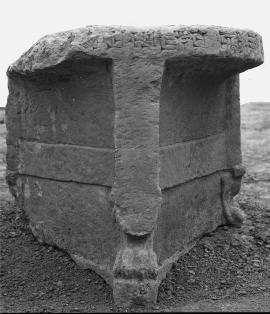More Than Meets the Eye: The Multisensory Experience of the Neo-Assyrian Temple
Kiersten Neumann
Oriental Institute, University of Chicago
February 9th, 2016, 3:30pm
Classics 21
Ancient Societies Workshop
The most fundamental ceremony of a Neo-Assyrian temple was the presentation of offerings to the gods, the principal components of which were food, drink, and aromatics. A range of portable works of art facilitated the preparation and serving of these goods, including offering tables, libation vessels, and incense burners. These works of art were crafted of similarly valued and visually appreciated materials as the divine image before which they stood—exotic woods, light-colored stone, and precious metals. The complimentary materials and strategic arrangement of these objects and the image within the temple would have had a strong visual impact on participants. Complimenting the visual was the smell of aromatics from incense burners, oils from oil burners, and the aroma of food offerings; the sounds of lamentations and prayers being recited and songs performed; the tactile sensations of the offerings and portable works of art; and the gustatory experience of consuming leftover offerings. All of these elements were integral components of the highly sensorial experience of presenting offerings to the gods in the Neo-Assyrian temple
In this paper I argue that it was the multisensorial phenomena of the presentation of offerings to the gods that marked this practice as something “other,” as ritualized practice fit for the dwelling place of a god within the cultural and social context of the Neo-Assyrian Empire. In order to thoroughly explore the multitude of attested and suggested sensorial aspects of this practice, this paper attempts to move beyond a strictly Cartesian five-sense framework and instead emphasizes the whole, the way in which all of the sensorial phenomena merged together during this performative act within the temple. Such a synergistic multisensorial effect would have been more important than the impact of each individual constituent, as it was this union that created the highly stimulating, memorable, and meaningful coherent system of multisensory experience of this particular ritualized practice. This approach, alongside a consideration of potential senses beyond the familiar five-sense framework, provides a more complete understanding of the Assyrian understanding of the senses and sense-making during the first millennium B.C.E.
This lecture is part of the Ancient Societies Workshop.


